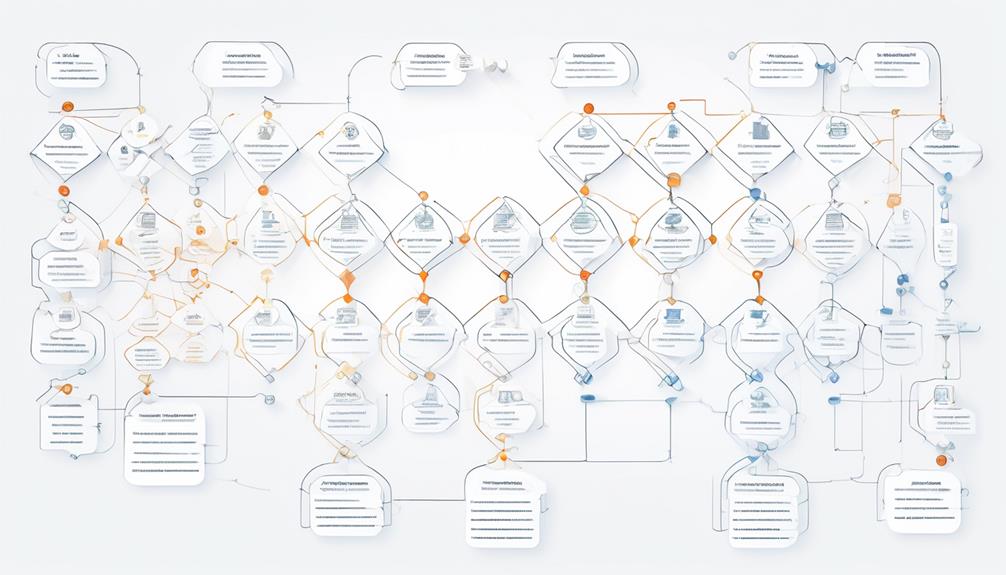The One-Bug Rule suggests you should fix one bug at a time instead of postponing or fixing multiple issues all at once. By focusing on a single problem, you maintain clarity, find the root cause more precisely, and prevent new errors from creeping in. This disciplined approach saves time, reduces frustration, and makes debugging more efficient. Keep going, and you’ll discover how adopting this rule can boost your problem-solving skills further.
Key Takeaways
- Fix one bug at a time to ensure thorough understanding and prevent introducing new errors.
- Addressing bugs immediately helps maintain code quality and reduces long-term debugging effort.
- Isolating each issue allows precise fixes and clearer testing, avoiding patchwork solutions.
- Rushing fixes can cause overlooked errors; disciplined, incremental corrections improve stability.
- Developing this habit enhances debugging efficiency and fosters a systematic, organized problem-solving mindset.

If you’re debugging a complex program, focusing on fixing one bug at a time can save you time and frustration. When you approach a problem with this mindset, you avoid the trap of chasing multiple issues simultaneously, which often leads to missed details and overlooked errors. One effective debugging strategy is to isolate each bug during your code review process. As you review your code, aim to identify and correct issues individually, rather than making broad, sweeping changes that could introduce new problems. This disciplined approach helps ensure that each fix is precise and that you understand exactly what was wrong, reducing the risk of creating new bugs elsewhere.
Focus on fixing one bug at a time to enhance precision and avoid overlooked issues.
Adopting the one-bug rule encourages you to treat each issue as a separate task. When you encounter an error, resist the temptation to fix everything at once. Instead, focus solely on the current bug, thoroughly analyze its root cause, and implement a targeted fix. This method not only streamlines your debugging process but also boosts your confidence, as you clearly see your progress with each resolved bug. It’s important to remember that rushing to fix multiple bugs can mask underlying problems, making the debugging process more chaotic. By fixing one bug at a time, you create a clear trail of corrections, which simplifies testing and validation later on.
Integrating this rule into your workflow means incorporating it into your code review sessions. During reviews, scrutinize your code carefully, looking for specific issues rather than trying to catch everything all at once. This focus allows you to develop debugging strategies that emphasize incremental improvements. For example, if a particular feature isn’t working as expected, isolate that feature and verify each component individually. Once you’ve fixed the bug in that area, test it thoroughly before moving on to the next issue. This step-by-step approach reduces the likelihood of regressions and makes your debugging process more manageable.
Remember that patience and discipline are key. It’s tempting to patch multiple bugs quickly, but that often leads to a patchwork of fixes that are hard to maintain and troubleshoot later. Instead, practice the one-bug rule consistently, and you’ll find that your debugging becomes more efficient and less stressful. Over time, this disciplined approach will become second nature, helping you develop a more systematic way of tackling complex problems. Ultimately, fixing bugs one at a time is not just about efficiency; it’s about adopting a mindset that values precision and clarity in your coding journey.
Frequently Asked Questions
How Do I Identify a Critical Bug Versus a Minor One?
When you’re identifying a critical bug versus a minor one, consider bug severity and its impact on your project. Critical bugs directly affect core functions, cause data loss, or compromise security, demanding immediate attention. Minor bugs are cosmetic or have minimal effect on functionality. Use prioritization strategies to evaluate how each bug influences user experience, system stability, and deadlines, ensuring you address the most urgent issues first for effective development.
What Tools Can Help Track and Prioritize Bugs Effectively?
Did you know 70% of projects fail due to poor bug tracking and prioritization? To stay on top, use bug tracking tools like Jira or Trello, which help you organize and assign bugs efficiently. Prioritization tools like Bugzilla or Azure DevOps enable you to classify bugs by severity, ensuring critical issues are fixed first. These tools streamline your workflow and prevent minor bugs from overshadowing major problems.
How Does Fixing Bugs Early Impact Project Timelines?
Fixing bugs early directly improves your project timelines by enhancing bug prioritization and boosting development efficiency. When you address issues promptly, you prevent them from snowballing into larger problems, saving time and resources. This proactive approach keeps your project on track, reduces delays, and ensures smoother progress. By prioritizing bugs early, you streamline development and maintain momentum, ultimately delivering quality results faster and more reliably.
What Are Common Pitfalls When Applying the One-Bug Rule?
When you focus on fixing bugs promptly, you might encounter pitfalls like bug tracking becoming overwhelming or losing sight of bigger issues. If team accountability isn’t clear, team members may neglect their responsibilities, causing delays. Also, fixing every minor bug immediately can lead to burnout or distract from more critical tasks. To avoid these, prioritize bugs wisely and maintain clear communication to keep the team aligned and efficient.
How Can Teams Foster a Culture of Immediate Bug Fixing?
Did you know that teams practicing immediate bug fixes see a 30% increase in software stability? To foster a culture of quick bug fixing, you should emphasize team accountability and reward prompt resolutions. Encourage open communication about issues, and integrate continuous improvement into your workflow. When everyone takes responsibility for fixing bugs right away, it creates a proactive environment that reduces technical debt and boosts overall product quality.
Conclusion
Remember, following the one-bug rule means fixing issues immediately rather than delaying them. Studies show that fixing bugs within 24 hours reduces the chance of them causing major problems by 70%. By acting quickly, you prevent small issues from snowballing into costly setbacks. So, stay vigilant, tackle bugs right away, and keep your project smooth and efficient. Embrace the one-bug rule—because the faster you fix it, the better your results will be.









